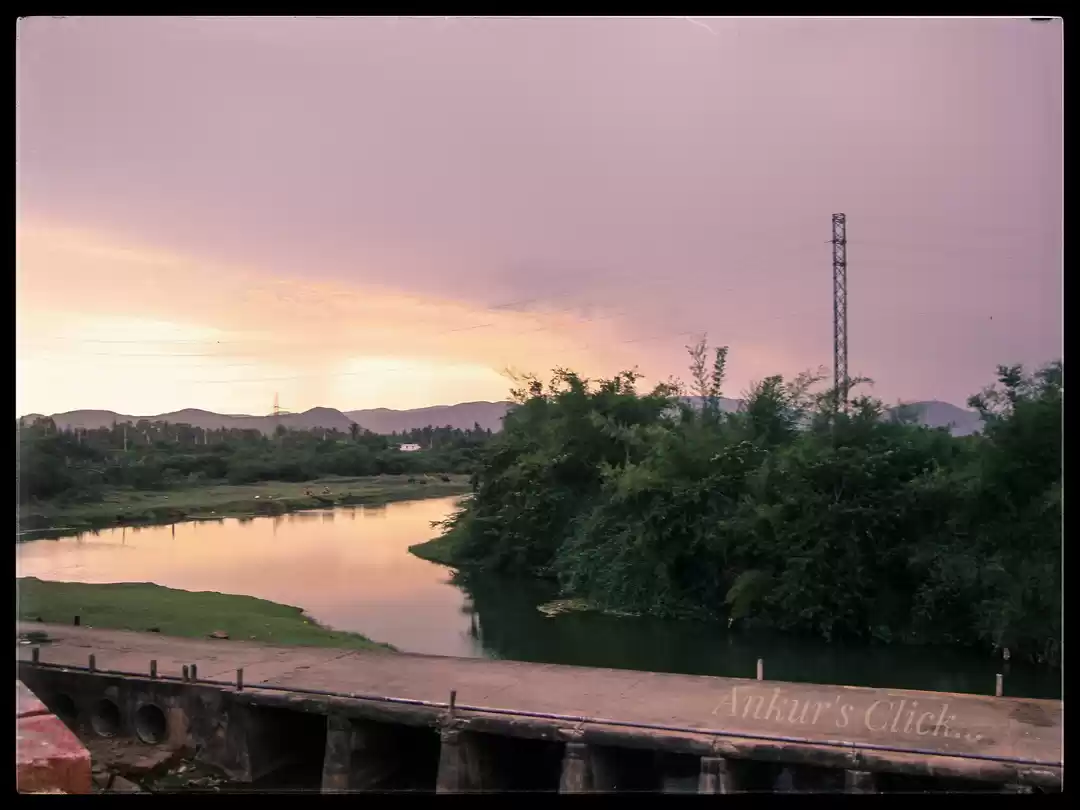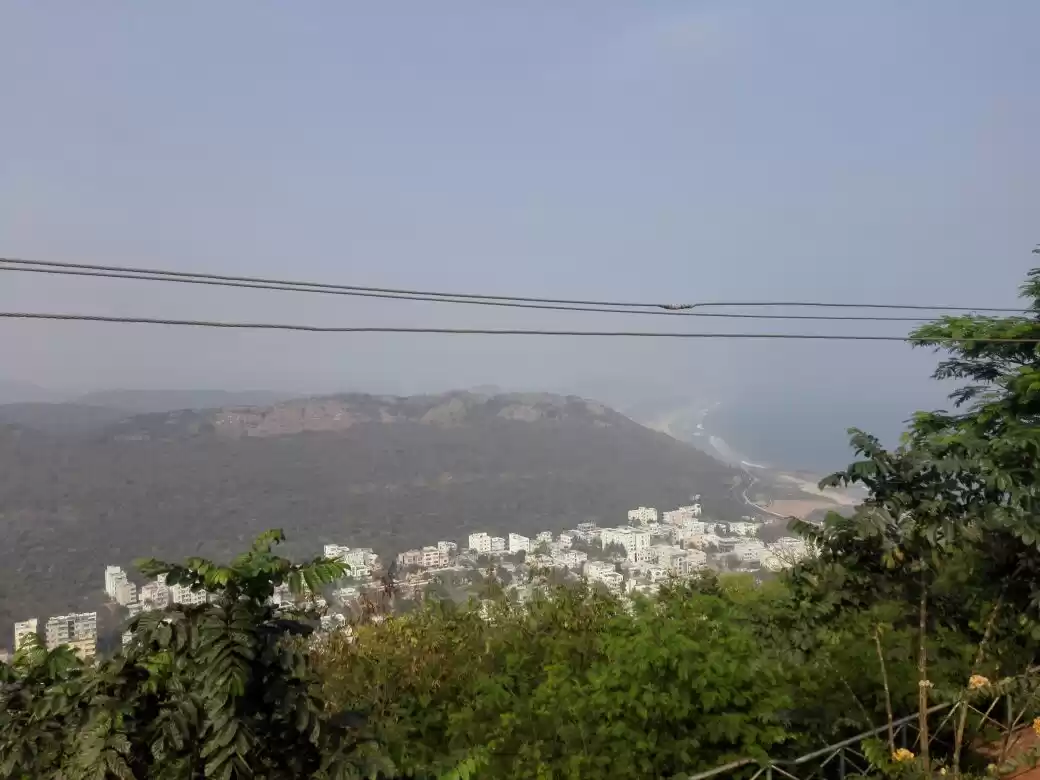
“I love to travel, but hate to arrive”-had been one of the intellectual pronunciations of Albert Einstein, through which he had conveyed his fondness for moving around. But when the city of destiny awaits you at the other end, you are bound to differ. Prakriti, my friend had been apprehensive about this girls’ gang travel, but Sharvani was in a hilarious mood. Among hassling preparations and an equally nerve-wrecking overnight train journey, the exhilaration had somehow been suppressed. At 5 in the morning, the three of us stepped out into the platform streets, surrounded by a familiar ruckus of auto rickshaws and taxis. Bhubaneswar was no different, I guess in this matter and manner. Almost everywhere, you have this din following you. As we traversed through the city, an aura of freshness hit us. The pristine air brought back our spirits. But the best part was yet to be discovered.
Our stay was scheduled a stretch away from the famous Ramakrishna beach. As if with a telepathy, the first rays of the dawn touched its golden sands at precisely the same time we caught the first glimpse of it. The reddened glow smoothed its way through the rustling waters and had dazzled the entire scene. People had intelligently placed themselves on the rocks to take in this panorama. The sands bumped against our tired sneakers, as we struggled to maintain our pace. There was a fair ongoing on the eve of the famous Vishakha Utsav. The beach had clusters of trees at places that lighted up with red and green. At one end, Novotel stood upright as a mark of sophistication and elegance. The roads were lined up with museums of all kinds.
In the midst, stood the INS Kurusura submarine, which was decommissioned and turned into a museum in 2001. The interiors proudly demonstrated the radar room, sonar room, control room, the captain’s chamber, the rest rooms, the weapons and instruments used, along with photographs and written scripts and the clingy lifestyle of the inhabitants. The guides briefed us about the involvement of the submarine, through the Indian Navy, in the Indo-Pak 1971 war. The artefact was about 91.3 metres in length and 8 metres in breadth. The submarine had reached Vizag through the Baltic Sea and had served the Indian Navy since then. Coffee tasted sweetly better.
Our next destination was about 10-12 kilometres away from the RK beach. The winsome travel through the beach road showcased the true charm of the city. We turned through the Kailash hill on one side and the beach, prettified exquisitely by parks. The entire conjunction, at one glance was divinity on land. We ended up aside the Rishikonda hill, and were to solidify our impression further.
The Rishikonda beach is one of the virgin beaches of the east. Its uniqueness lies in the hills bordering the beach. The place was fluttering with tourists. The place, appreciatively presented water sports like swimming, water skiing and wind surfing, and was encircled by amenities. Rishikonda could, in every way, cater to your adrenaline rush. Chai had a tang we would always relish. Even the beverages are lip-smacking!! We plied back through the enchanting terrains. The students at Gitam would never get bored,” thought we, as the plush corridors of the University ran through our sights. Alighting through the hilly topography, the distant view of the hills ending into the sea was enchanting.
The second day was to be the terminus of Holiness; the conjugation of Vaishnavism and Shaivism. Our first stop was Shri Varaha Laxmi Narasimha Temple, popularly known as the Simhachalam temple, where Lord Vishnu resides in Narasimha avatar, on the Simhachalam hill. The route from the base to the hilt was curvaceously attractive, with the view of the city from the zenith. The gorgeous architecture is a Vaishnava product, and the Lord is covered with sandalwood paste throughout the year, resembling a Shivling. The pujaris take a mass with them and perform a group puja, with great devotion and austerity. During an occasion called Chandanotsav, the sandalwood paste is removed and renewed.
There existed extreme calmness and tranquillity in the atmosphere. Way back down the lane, we experienced a magnificent sunset. But there were miles to go before we retired for the day.
Ever since our stay here, a step out of the guest house and a hilly view would appear on all the sides, with the words, Kailasagiri engorged upon them. The dusk had deepened and the ride uphill was enthralling. The hairpin bends could make you nauseated, but nevertheless, the landscape beyond was a treasure. The highs meeting the lows, the roads stretching far and from a 360 degrees narrow between them, was terrific. Such was the vista that every inch was photogenic in its own way. The track was deserted, unlike the peak, which was bustling with tourists.
There was a titanic view and a spot to enjoy the dark view of the city, illuminated and garlanded. An entrance, earmarked as the Kailash hill, paved us to the chief attraction of the destination; Lord Shiva and Shakti, around 40 feets above the base, in white and bright. The stairs, from both sides, led to the idols with the gurgling flow of water in between.
Apart from the road, there was another trick to reach Kailashgiri. En-route to Rishikonda, we had observed a long queue of about five storeys high, which boasted a rope-way that would take people, in fours, high up to the destined spot. The ride ensures a prepossessing view of the entire city. There is also, the availability of toy train to help you catch an aerial glance of the city. Apart from these, the floral clock, the jungle trails, Shanti Ashram and Shanku Chakra Nama are some of the other attractions boasted by the hilltop. The coolness of the breeze walks you out of tiredness. Dropping down through the track, we made a silent promise to revisit it, whenever possible.
The day following was to be our last day before we left for Bhubaneswar in the late evening. We were already sure that the days had fallen short for the destinations and we were to comfortably choose the options to be targeted. Unsure, we decided to visit the Dolphin’s hill.
The approach exposed the other side of the city; the industrial one. The bridges and the aura offered industries on both the sides. Taking the track uphill, there were view points to the port of Vishakhapatnam, and the scenario was worth viewing. As we glided up, the scenes got better. The valleys provided a panoramic view, through such beautiful landscapes.
But as the Zig Ziglar quote goes, difficult roads often lead to beautiful destinations. And the eye-candy was waiting for us at the other end. The journey ended in a village, which was in a celebrative mode, amongst a grove of trees, opening into a seascape that could cut a beat out.
Encircled by Dolphin hill on the left, a colony of trees guarding a hamlet, and a vast bluish green expanse on the other, Yarada, besides Gangavaram beach, was the best feast for the soul, ever thought of. Looking up onto the left, it was difficult to comprehend the heights we had covered. A lighthouse marked the pinnacle. The shape of the hill suggested proving as to why be it called a Dolphin’s nose; it looked like one. The feet of the hill bore embankments, which outlined the Gangavaram port. The rocks, bearing the brunt of the seas, invited us. Ships outlined the horizon. There was a trek to take up to a hilly terrain on the right. The place was a real haven for photography and whiling time away. A walk to and fro is a must to avail the glint of the sea all around. The rocks possessed a roar of the seas, to my utter surprise. The mesmerising greenery of the trees as well as the sea enchants you to the hilt. We took a detour back to our place, taking in for the last the last time, what Vizag had to offer.
Back to our rooms, we gulped steaming Araku coffee, named after the source importing it , the famous hill station we had planned to visit but did not. Alongside, Borra caves had also been left out. But we had savoured the nucleus of the city in the best way possible and with an immense sense of happiness. Bags were packed and we left behind, a priceless remnant of our hearts there. Indeed, the city is rightly called “The Jewel of the East”.



























